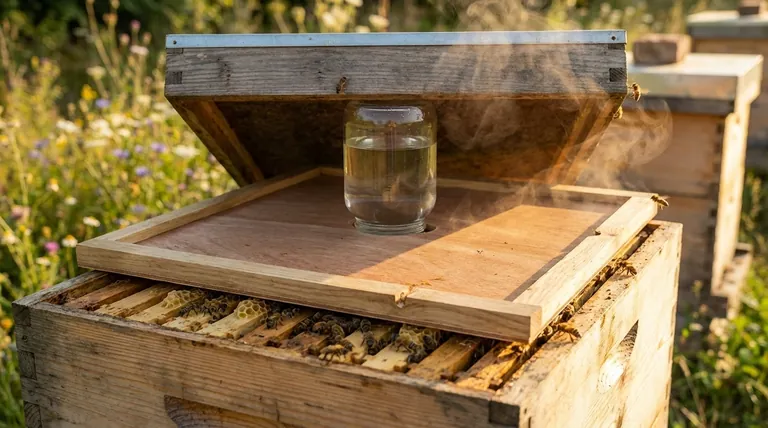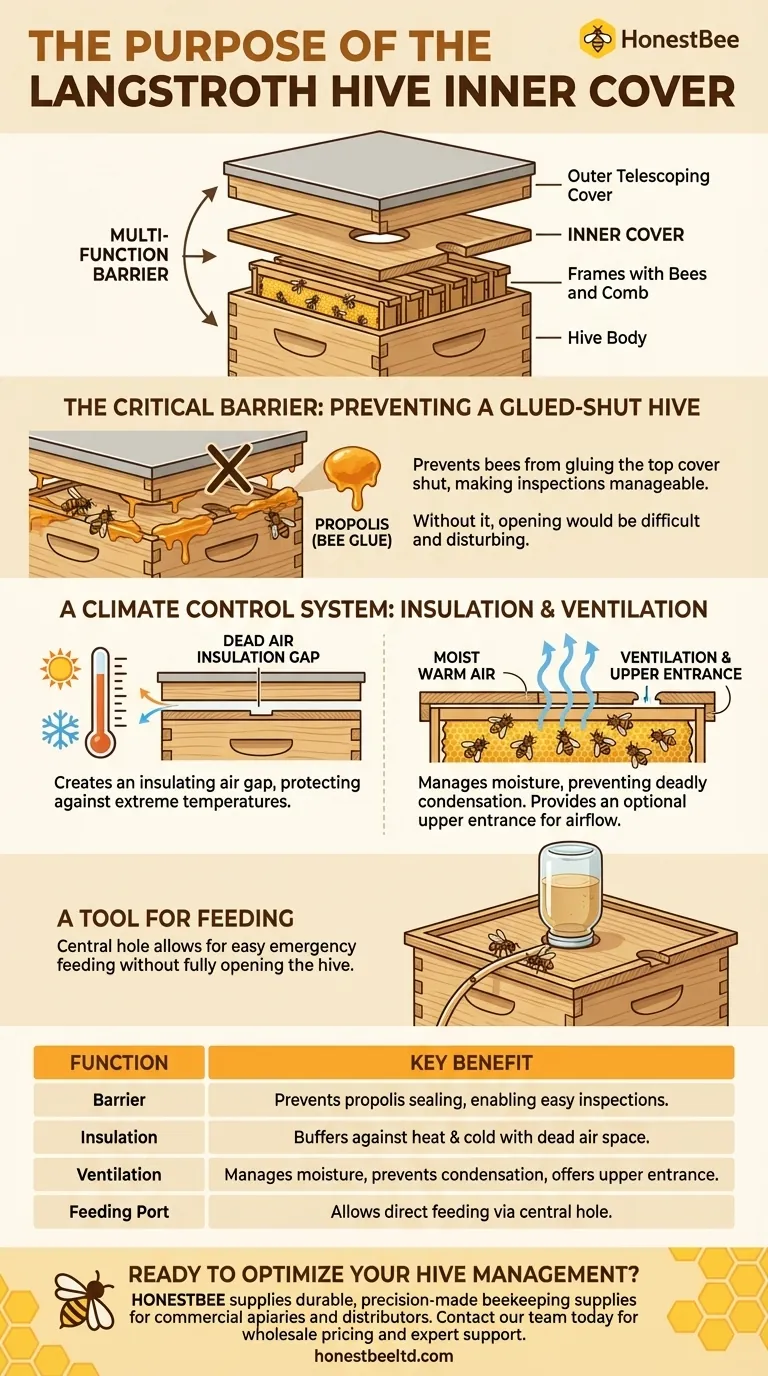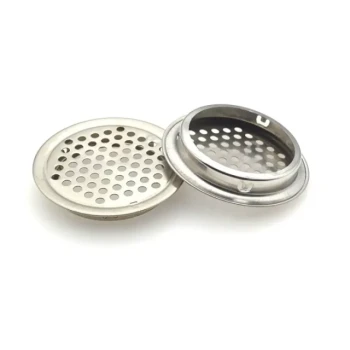At its core, the inner cover of a Langstroth hive serves as a multi-function barrier between the bees and the main outer cover. It creates an insulating air gap, provides crucial ventilation, and prevents the bees from gluing the top cover shut with propolis, making hive inspections manageable.
The inner cover is not just a simple lid. It is an essential hive management tool that gives the beekeeper critical control over the colony's internal environment, directly influencing temperature, moisture, and access for feeding.

The Critical Barrier: Preventing a Glued-Shut Hive
The most immediate and practical purpose of the inner cover is to create a manageable space between the top frames and the outer telescoping cover.
The Problem of Propolis
Bees produce a resinous mixture called propolis, or "bee glue," to seal unwanted gaps and cracks in their hive. They are prolific in its use, especially in the tight space under a hive's main lid.
Why This Barrier Matters
Without an inner cover, the bees would firmly glue the outer cover directly to the top of the frames. This would make opening the hive for inspection extremely difficult, requiring significant force that would disturb and anger the colony. The inner cover provides a small, easily-broken seal that makes hive entry much less disruptive.
A Climate Control System: Insulation and Ventilation
The inner cover is a surprisingly sophisticated tool for managing the hive's internal climate, which is vital for the colony's year-round health.
Creating an Insulating Air Gap
The inner cover creates a pocket of "dead air" between itself and the outer cover. This trapped air acts as a buffer, insulating the hive from the extreme heat of direct summer sun and the bitter cold of winter.
Managing Deadly Hive Moisture
A colony's respiration and nectar-curing activities produce a significant amount of water vapor. In cold weather, this warm, moist air can rise, hit a cold outer cover, and condense into water droplets that drip down onto the bees, which can be fatal.
The inner cover, being warmer than the outer cover, helps manage this. The notch in the rim or the central hole allows this moist air to ventilate out of the hive, preventing dangerous condensation.
Providing an Upper Entrance
The small, notched opening often found on the rim of the inner cover serves as an optional upper entrance. This provides bees with an alternative exit point and enhances air circulation, which is particularly useful during hot weather or when the main entrance is congested.
Understanding the Trade-offs and Variations
While a standard component, the inner cover's function can be adapted based on the season and the beekeeper's goals.
The Standard Design
Most inner covers are simple wooden frames with a flat panel insert. They feature a central hole and, typically, a notched rim on one side to provide that upper entrance and ventilation path.
Seasonal Adjustments
In summer, the notch is usually positioned to allow maximum airflow. In winter, some beekeepers flip the inner cover so the flat side is up, placing insulation material or a moisture-absorbing "quilt box" on top of it to further enhance moisture control and insulation.
A Tool for Feeding
The central hole is perfectly designed for emergency feeding. A jar feeder can be inverted directly over the hole, allowing the beekeeper to provide sugar syrup to the bees directly above their cluster without fully opening the hive.
Making the Right Choice for Your Goal
Understanding the inner cover's functions allows you to use it strategically to support your colony's specific needs.
- If your primary focus is easy hive inspections: The inner cover is non-negotiable, as it is the single best defense against a hopelessly propolized top cover.
- If your primary focus is winter survival: Use the inner cover to provide insulation and, most importantly, a path for excess moisture to escape the hive.
- If your primary focus is colony growth: Utilize the central hole for efficient feeding to stimulate a weak colony or prepare a hive for honey production.
Mastering this simple piece of wood is a fundamental step toward becoming a more effective and observant beekeeper.
Summary Table:
| Function | Key Benefit |
|---|---|
| Barrier | Prevents bees from gluing the outer cover shut with propolis, enabling easy inspections. |
| Insulation | Creates a dead air space to buffer the colony from extreme summer heat and winter cold. |
| Ventilation | Manages hive moisture to prevent deadly condensation and provides an optional upper entrance. |
| Feeding Port | The central hole allows for easy emergency feeding with a jar feeder. |
Ready to optimize your hive management? For commercial apiaries and distributors, the right equipment is key to colony health and productivity. HONESTBEE supplies durable, precision-made beekeeping supplies and equipment through wholesale-focused operations. Let us help you equip your operation for success. Contact our team today for wholesale pricing and expert support.
Visual Guide

Related Products
- Inner Beehive Cover for Beekeeping Bee Hive Inner Cover
- Professional Insulated Winter Hive Wrap for Beekeeping
- Professional Galvanized Hive Strap with Secure Locking Buckle for Beekeeping
- Long Langstroth Style Horizontal Top Bar Hive for Wholesale
- Stainless Steel Round Beehive Air Vents for Ventilation
People Also Ask
- What is the role of inner covers in insulated beehives? Master Moisture Control for a Healthy Colony
- What is the role of the inner cover in a beehive? Essential Climate Control for Hive Health
- What is the function of the center hole in the inner cover? Master Hive Ventilation and Feeding
- What is an inner cover in a beehive and what are its features? A Key Tool for Hive Health & Management
- What are the advantages of using an inner cover in a beehive? Key Benefits for Hive Health & Beekeeper Efficiency



















